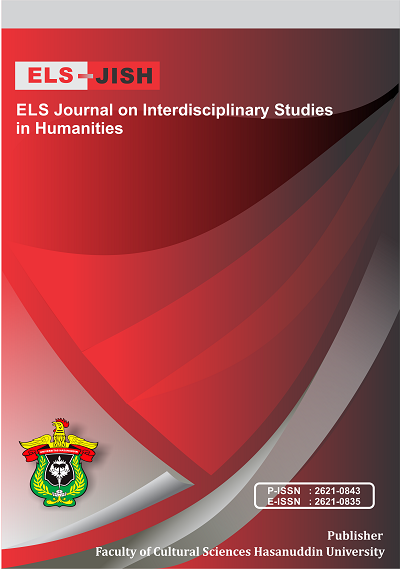Improving Reading Comprehension by using Experience Text Relationship (ETR)
DOI:
https://doi.org/10.34050/elsjish.v5i2.21150Keywords:
Reading, Comprhension, ETRAbstract
Comprehension is the main goal of reading. Reading comprehension is an attempt to understand, evaluate, and also recognize the author’s ideas in reading text. A reader needs comprehension to catch the content of message or information from the text. One of the alternative methods to improve the students’ reading comprehension is with Experience Text Relationship method. The purpose of this study is to improve the students’ reading comprehension, by implementing Experience Text Relationship (ETR). The method in this study is Classroom Action Research (CAR) which has several sequenced procedures including planning, action, observation, and reflection. The technique of data analysis is divided into two namely quantitative which came from the reading tests, and qualitative data which came from the observation sheets. The result of the study shows that the ETR technique is one of the most effective strategies for teaching English especially to improve students’ reading comprehension because the students had more chance to tell their stories that might be related to the materials that were taught.
References
Ababa, F.J. (2019). The Use Experience-Text-Relationship ETR technique to Improve Narrative Text Reading Skill of the Eleventh Grades of SMAN 1 Grabag in the School Year 2018/2019. Unpublished thesis. Tidar: Universitas Tidar.
Arianto, (2017). Critical Reading Strategy in Terms of Gender Used by the Four Graduate Students in the ELT Program of Universitas Negeri Malang. Unpublished Thesis: Universitas Negeri Malang
Birks & Mills. (2011). Qualitative Methodology a Practical Guide. London: SAGE
Chastain, K. (2013). Develoving second language skills, theory and practice (3rd ed).
New York: Harcourt Brace Jovanovich, Ich.
Grabe & Stoller. (2013). Teaching and Researching Reading (2nd ed). Harlow: Longman.
Harmer, J. (2012). Essential Teacher Knowledge: Core Concepts in English Language Teaching. Pearson: Longman.
Jarmiatik, (2012). Improving Students’ Reading Comprehension Using ETR Method at the Tenth Grade Students of SMP Negeri 3 Mojolaban in The Academic Year Of 2011/2012. Unpublished Thesis. Surakarta: Universitas Sebelas Maret.
Kemmis & Mc. Taggart. (2010). The Action Research Planner. Geelong: Deakin University Press.
Kintsch, Bringham. (2012). Doing Action in English Language Teaching. New York: Taylor & Francis Library.
Lawrence, J. (2017). Cognitive and metacognitive reading strategies revisited: implications for instruction. The Reading Matrix, Vol. 7 p.55-60.
Lewis, B. A. (2002). Reading between the lines. English teaching journal, 38 2, 121-126.
Medina, S. L. (2012). Effect of strategy instruction in an EFL reading comprehension course: A case study. Reading Teachers Journal Vol 3, No. 2
Narmaditya, B. S., Winarning & Wulandari, D. (2017). Impact of Problem Based Learning on Student Achievement in Economics Course. Classroom ActionReasearch Journal. https://doi.org/10.17977/um013v1i112017p1
Nengsi, Mirda. (2017). Improving the Students’ Reading Comprehension Through Group Discussion Technique at the Seventh Grade of SMP NEGERI 1 KODEOHA. Unpublished Thesis. Kolaka: Universitas Sembilanbelas November Kolaka
Pang. (2011). Teaching Reading: Educational Practices Series. France: Sadag, Bellegarde.
Pramanik, C.D. (2015). The Implementation of the Experience-Text-Relationship ETR Method to Improve Grade Students’ Reading Comprehension At SMP Negeri 9 Yogyakarta in the Academic Year of 2014/2015. Unpublished thesis. Yogyakarta: Universitas Negeri Yogyakarta.
Tarigan, (2018). Discourse Analysis and Reading Instruction. Washington, DC: USIA.
Wood, K.D., & Blanton, W.E. (2015). Literacy instruction for adolescents. New York: A division of Guilford Publication, Inc.
Downloads
Published
How to Cite
Issue
Section
License
Copyright (c) 2022 Susi Astiantih, La Ode Muh. Idrus Hamid B, Yetty Yatty, Windari Nurul Pratiwi Sofyan

This work is licensed under a Creative Commons Attribution-NonCommercial-ShareAlike 4.0 International License.






